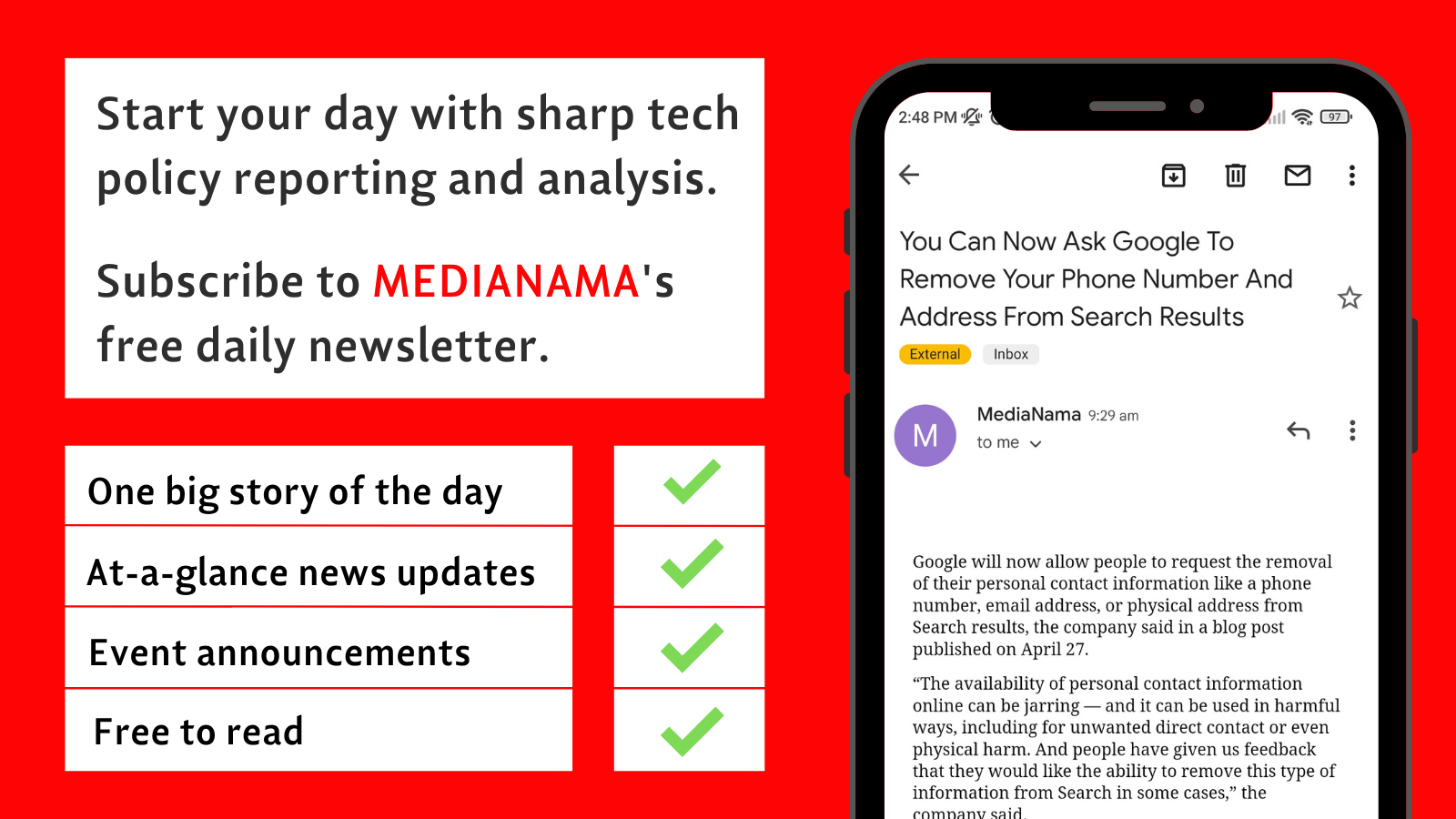“… when the TRAI Act envisaged the definition of telecommunication services, it [the definition] had a possibility of bringing in broadcasting services as well. It was earlier excluded and then included by way of a proviso. At that time, there was also an effort to see whether we could come out with a convergence bill sometime in 2000. That got shelved and started again in 2011 or so and then that also didn’t go ahead…” This is how Abhishek Malhotra from TMT Law started off the session ‘Regulating broadcast, television, telecom and streaming’ at MediaNama’s discussion on Internet Regulation, Convergence, and TRAI on February 24, 2023.
The Telecom Regulatory Authority of India, in January 2023, released a consultation paper on the convergence between the Internet, broadcast, and telecommunication under the same norms across domains. The paper talked, among other things, about the ‘blurring distinction between broadcaster and consumer’ and the ‘difficulty in the regulation of content in converged era.’
You can read the consultation paper here and our summary of the paper here.
STAY ON TOP OF TECH POLICY: Our daily newsletter with top stories from MediaNama and around the world, delivered to your inbox before 9 AM. Click here to sign up today!
Speaking as a discussant at the MediaNama event, Malhotra talked about TRAI’s interest in content regulation. The comments have been edited for purposes of brevity and clarity.
TRAI’s interest in content regulation: historical context
“TRAI’s focus has always been along the lines of what constitutes a telecommunication service, and whether the service at an infrastructure level can be purely brought within their control. Between 2000—when the supervisor was added—and 2017—when the broadcasting regulations were overhauled—there was a situation where the MRP concept in the case of Broadcasting Services was recognized and firmly established. Till then, there was a particular price that was taken in 2004 as a price freeze because that’s when TRAI really stepped into regulating broadcasts,” Malhotra explained.
So what happened between 2004 and 2017?
“In 2017, when TRAI finally came out with the MRP regime, there was a massive overhaul of the way businesses are supposed to be carried out. Broadcasters challenged this before the Madras High Court. It went to the Supreme Court where one of the primary arguments of the broadcasters regarding the jurisdiction of TRAI was that the angle of copyright is inherent in our business. Not only are we owners of the content that’s created, but we also are the owners of the broadcast reproduction right under Section 37 of the Copyright Act,” said Malhotra.
The rights accorded to the broadcasters under the Copyright Act allow broadcasters to fix the prices of channels of their content. However, Malhotra said that TRAI is trying to trample upon that right by price fixation methodology. And that essentially amounts to regulation of content, which the TRAI does not have the power to do, he said.
According to Malhotra, the price fixation, MRP cap, etc., discussed nowadays, is only from the point of view of consumer protection because the TRAI Act requires a balance between service providers, including broadcasters, delivery platform operators on the one end, and consumers on the other end. It’s primarily to cater to the infrastructural aspect.
“It has nothing to do with content regulation. And it is very, very clearly said that they [TRAI] cannot get into the sphere of content, and if they do, then that will be getting into the copyright domain,” said Malhotra. According to the Supreme Court, TRAI looks at the delivery of content to the consumer, he explained.
The TRAI sought to make further amendments again on the regulatory tariff order space. Last year, it sent out notices to various broadcasters, offering a linear feed of their channels on OTT platforms, and asked for infrastructural details for the delivery of this content onto platforms.
Did the infrastructure portion come in because that’s where TRAI derives its past from?
According to Malhotra, TRAI said broadcasters are not entitled to delivery of content onto an OTT platform, which is not within the domain of TRAI’s current regulatory framework, because of regulation 5.6 of the downlinking guidelines. This states that a broadcaster should give signal reception decoders only to those entities that are registered with the Ministry of Information and Broadcasting or the Department of Telecommunications.
Further, TRAI said broadcasters necessarily giving something as a device or a service to these OTT platforms to allow receipt and carriage of their content violated 5.6 regulation.
According to Malhotra, the broadcasters argue that “merely because we [broadcasters] are a service provider and governed by the TRAI Act, does not mean that each and every activity of ours will be so governed. The activity that you [TRAI] are talking about is allowing our specific content to be made available on a different platform, which you yourself say you do not govern. So then on what basis are you asking us this question?”
Is there a fundamental difference in law between broadcast and streaming?
There is no definition under the law from a broadcaster’s perspective of what constitutes a broadcast. That’s why it’s even more perplexing that we are going into debating such three-four-degrees apart kind of issues when we’ve not even addressed the basic aspect of what constitutes a broadcast, Malhotra said.
Further, he pointed out that the definition of ‘broadcast’ under the Copyright Act can be used in two contexts: when it was originally used in terms of definition, it was to expand the scope of exploitation by a copyright owner to say that any communication to the public, including by way of broadcast, will be actionable by the copyright owner if it is unlicensed.
“You are looking at it from the point of view of someone who is going to exploit their content via the broadcast,” said Malhotra.
He argued that when the broadcast reproduction right came about in 1994, there ought to have been a separate definition of broadcast, where it never came into effect. Simultaneously, there is a broadcast treaty, an international-level treaty that is being negotiated, which has been on since 2004. India and Brazil were the only people objecting to that treaty coming into place, and that provided a very clear definition from the point of view of a broadcaster. What would their rights be? What would be their obligations, aspects of webcast, etc.?
Regulation of content is available on broadcast, where there is a broadcast content code in play. But if the same thing is streamed online, that code does not come into effect. So isn’t there a regulatory gap?
The first level of regulation came about when the British were still ruling India in the terms of the Press and Registration of Books Act, because that is essentially the most popular medium, print medium. After independence, the most ubiquitous form of consumption of content apart from the print media was cinemas, Malhotra explained.
“What I’m driving at is there is always a basis or a reason for you to enact a law or a rule or a guideline to regulate content. Now when the internet came into being, content was made available—unlike a situation where you are clearly providing for a downlinking license and subjecting it to certain terms and conditions. Internet is much more ubiquitous with no geographical boundaries, etc. Everyone across the world is grappling with how to regulate it. So, I think the point is, if you are trying to regulate a particular activity or a type of content or in the form of a medium, then there has to be a basis for why you want to do it.
The basis for the internet perhaps was felt in the wisdom of the legislator or the executive because the IT rules came about as a set of rules—and not legislation—because there were too many instances of people filing PILs against content coming on the OTT platform. So, say that these people are not regulated, they are able to show any and everything. It goes against the Indian societal context. They should also be there for an extension of a CBFC to the internet domain. So [entities said they will] make this regulation, but in the nature of a self-regulatory scenario. Content owners and the people who are actually coming out with the so-called curated content are already aware of the kind of classifications that they need to give to their programs based upon the audience that they are targeting and based upon the content that they have. So we will leave it to them to their best judgment to figure out what that content classification should be,” said Malhotra.
To conclude, Malhotra said that the norms for applicability, whether it is TV or cinema, are the same. It will be tested against Article 19(2) of the Indian Constitution.
If you look at it in the porn ban case in the Supreme Court, the Indian government said that it doesn’t want to censor because it doesn’t want to do moral policing. Two years later, the same government comes out with IT Rules for regulating streaming services. How does this now make sense?
“No. So, when PIL after PIL was being filed before courts, the government said, look, there is a mechanism governed by or regulated by MeitY to ensure that there is access to websites that are not in violation of the constitutional principles. It is a hands-off approach where the government is not doing anything. The reason why the government actually came out with the IT rules was I think two reasons. One, perhaps they were fed up with constant PILs and constant mandates, matters coming up where they needed to answer this question as to why this should not extend to the internet. The second, was maybe a push by some OTT platforms to say, let’s have an identified set of some sort of a code, which we can stick by and govern ourselves by so that we don’t get hauled up in criminal matters,” said Malhotra.
Note: The headline was edited for brevity at 11:55 am on March 3, 2023.
This post is released under a CC-BY-SA 4.0 license. Please feel free to republish on your site, with attribution and a link. Adaptation and rewriting, though allowed, should be true to the original.
Also Read:
- Is India’s Telecom Regulator Equipped To Deal With Issues Related To Quality Of Services? #NAMA
- No Clarity On Aspects That A Converged Regulator Will Focus On: Expert On TRAI’s Convergence Paper #NAMA
- Parliament Report: 7 Key Recommendations On Internet Shutdowns India’s Telecom Dept Didn’t Follow
- How Will The Indian Telecom Regulator’s Recommendations On Digital Connectivity Impact Buildings?






























